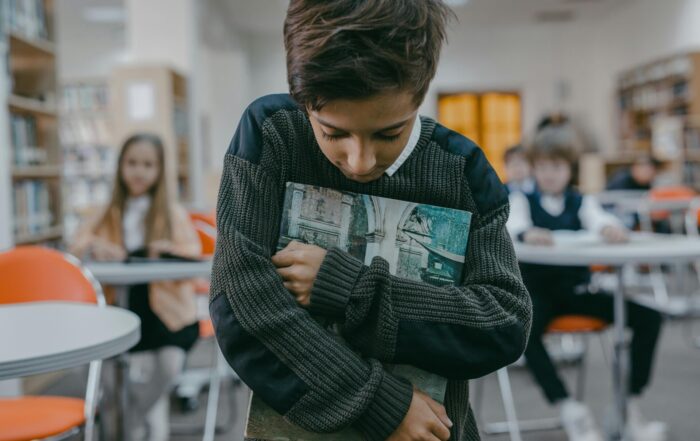
By Renée Fabian
When I color during therapy, it creates a safe space for me to express painful feelings from my past. Coloring engages a different part of my brain that allows me to process my trauma in a different way. I can even talk about the most difficult memories of my sexual abuse without panicking.
Yet there’s more to art therapy than coloring, despite what the adult coloring book trend may suggest. They’re onto something, though, as I’ve learned through my own experience. Art therapy, just like talk therapy, has enormous healing potential when done with a trained professional. In fact, for those with post-traumatic stress disorder (PTSD), working with an art therapist has been a lifesaver.
What is PTSD? PTSD is a psychiatric disorder resulting from a traumatic event. Terrifying or threatening experiences like war, abuse, or neglect leave traces that get stuck in our memories, emotions, and bodily experiences. When triggered, PTSD causes symptoms like re-experiencing the trauma, panic or anxiety, touchiness or reactivity, memory lapses, and numbness or dissociation.
“Traumatic memories typically exist in our minds and bodies in a state-specific form, meaning they hold the emotional, visual, physiological, and sensory experiences that were felt at the time of the event,” says Erica Curtis, a California-based licensed marriage and family therapist. “They’re essentially undigested memories.”
Share This Post!
Protecting Children from Sexual Abuse in the #MeToo Era
By Nickolas Agathis, MD Do you keep up with any modern social movements, such as #MeToo, #BlackLivesMatter or #KeepFamiliesTogether? The conversations surrounding them are still grabbing widespread attention through social media [...]
Immigrant Health is Interpersonal
By Amanda Venta, PhD Waves of Latinx immigration to the United States have changed in recent decades, and our scientific literature is only beginning to catch up. Regional violence and unrest [...]
Essential Elements of a Trauma-Informed Juvenile Justice System
NCTSN Trauma-informed policies and procedures make juvenile justice organizations safer and more effective by ensuring the physical and psychological safety of all youth, family members, and staff and promoting their recovery [...]
How Childhood Trauma Can Impact the Brain
Written by Kaytee Gillis, LCSW A recent study published in Biological Psychiatry: Cognitive Neuroscience and Neuroimaging finds that childhood trauma can lead to disruptions in two main regions of the brain, the default mode network (DMN) and [...]
Posttraumatic Stress Disorder: The Missed Diagnosis
National Institute of Health Posttraumatic stress disorder (PTSD) is frequently under-diagnosed in maltreated samples. Protective services information is critical for obtaining complete trauma histories and determining whether to survey PTSD symptoms [...]
Types of Therapy for Childhood Trauma Explained
Medically reviewed by Akilah Reynolds, PhD — Written by Mandy French on August 30, 2023 Childhood trauma can affect people in various ways. There are many therapy options to help treat the effects of this trauma. A [...]







